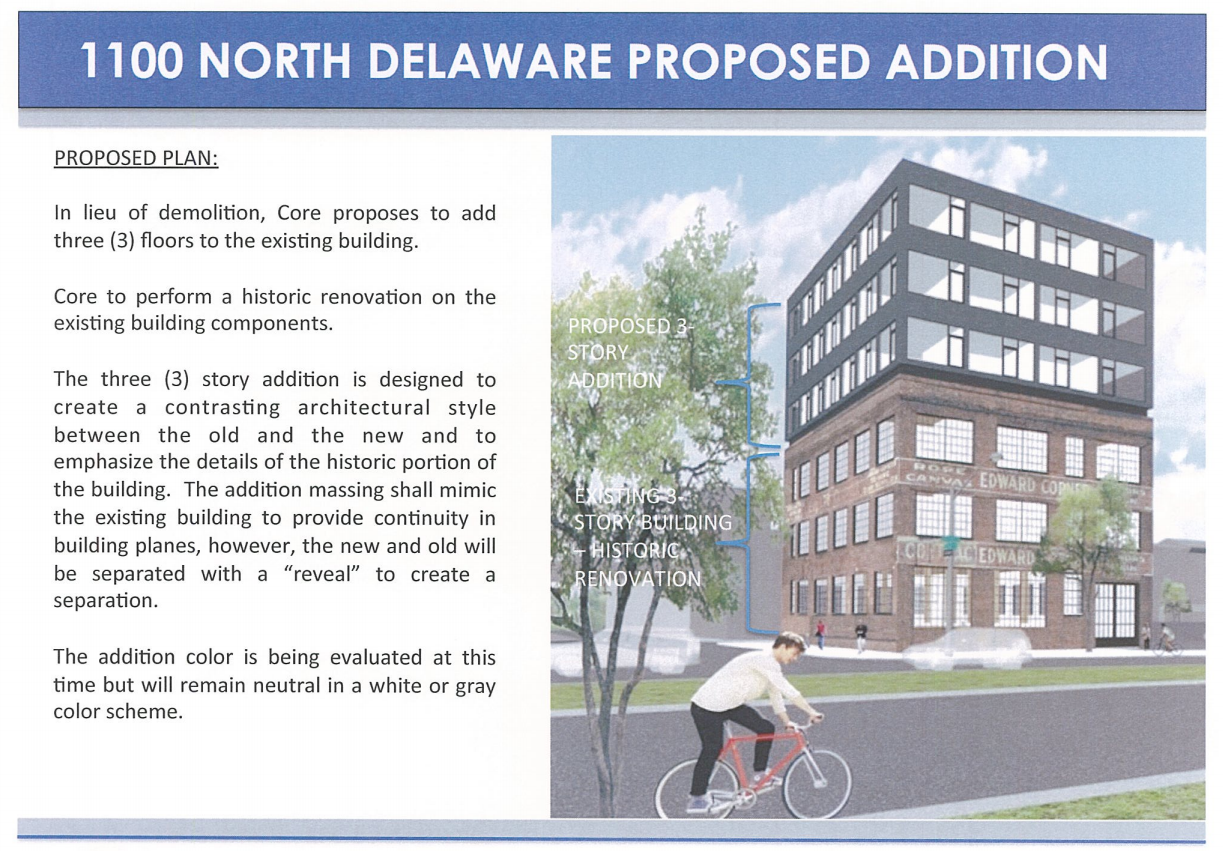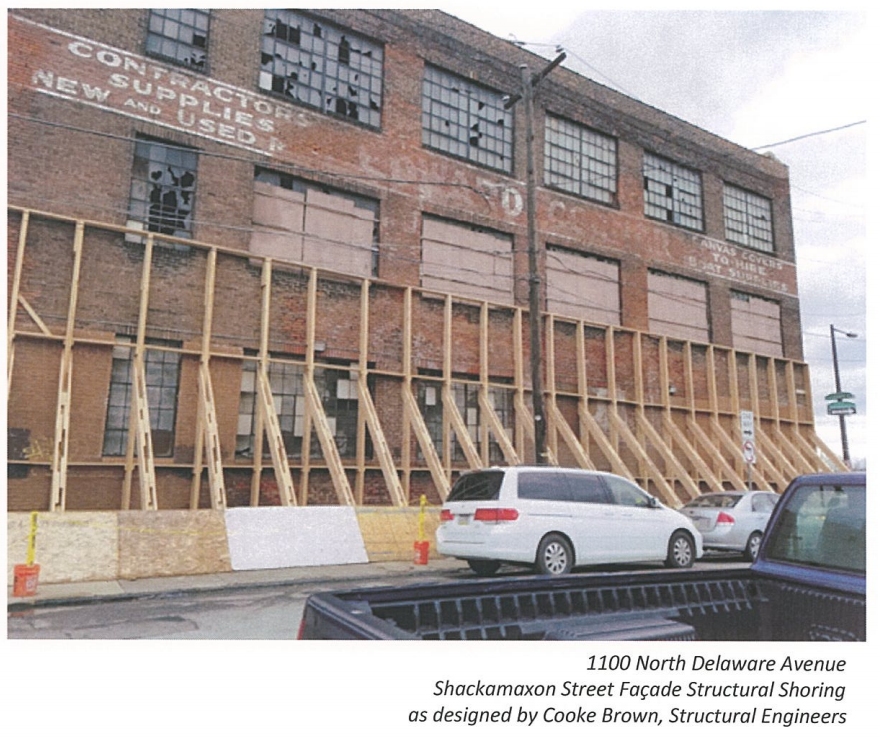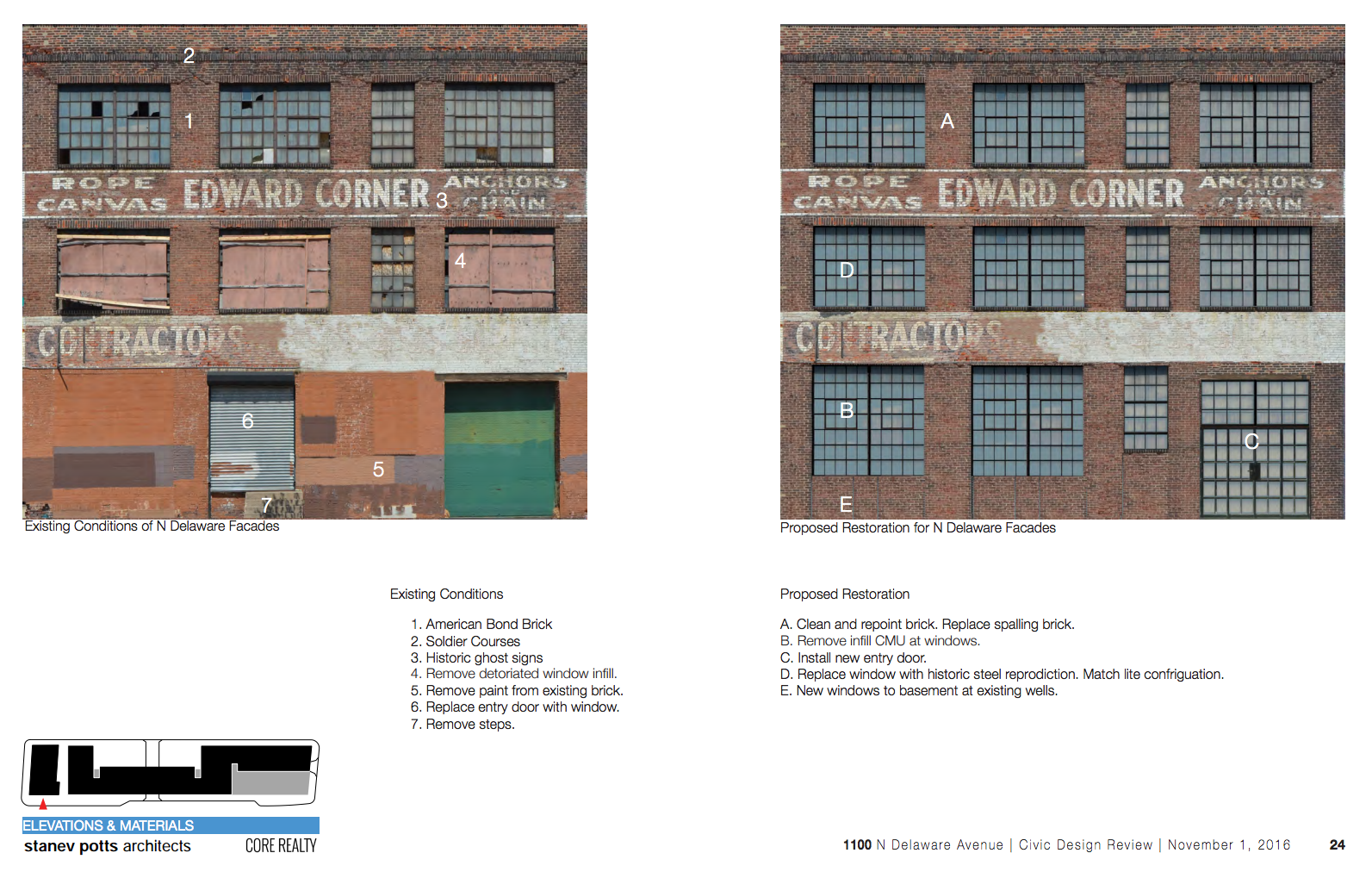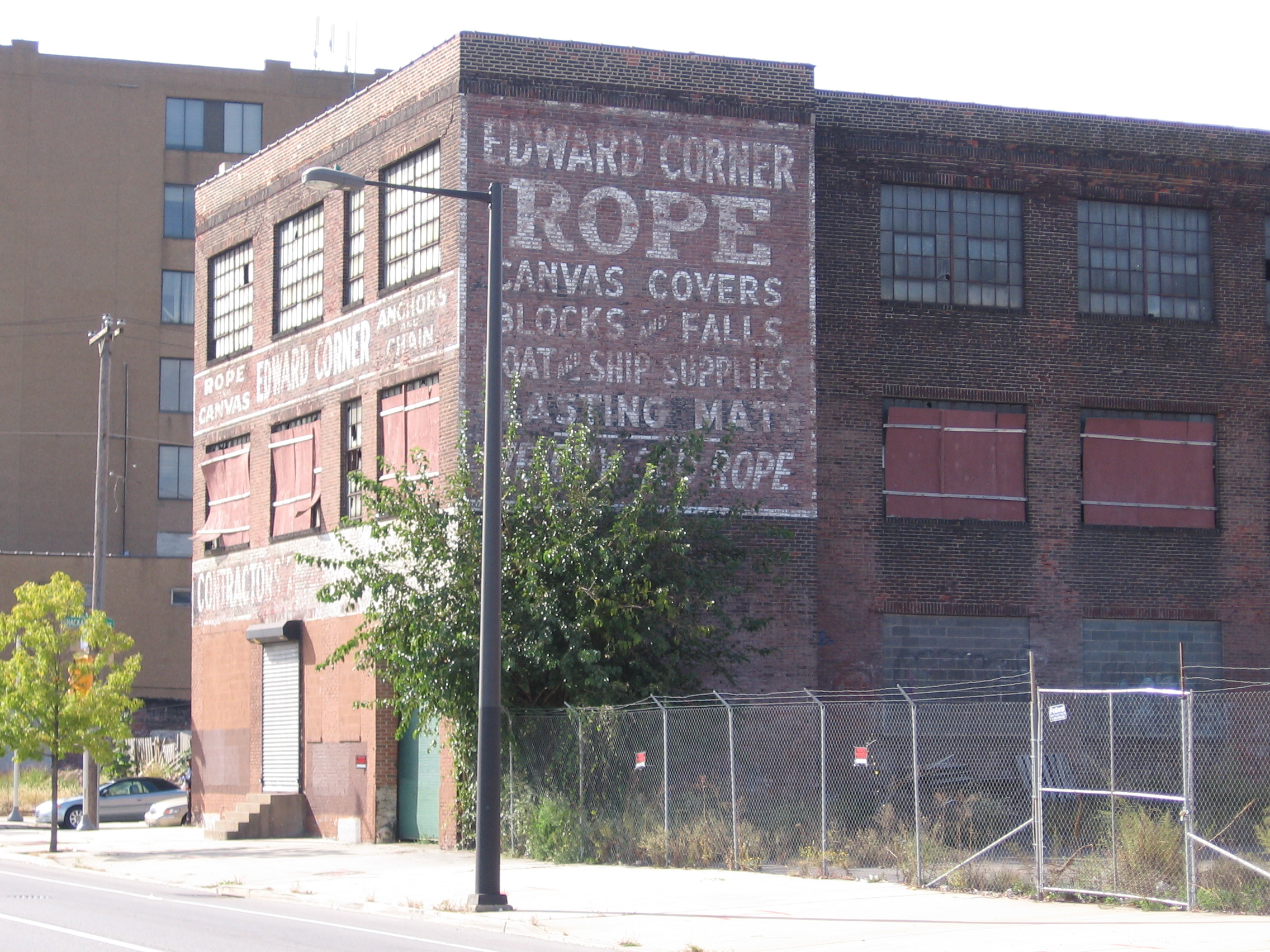Extra height proposed for Edward Corner building in hardship appeal

On Monday, the Philadelphia Historical Commission’s Committee on Financial Hardship ruled in favor of Core Realty’s plea that they would need to alter the Edward Corner building in order to save it.
The developer plans on incorporating the three-story historically protected building at Delaware Avenue and Shackamaxon Street into its designs for a large mixed-use apartment building planned for a neighboring parcel (now a parking lot). But the almost 150-year-old rope and canvas warehouse, which has sat unused for many decades, is in very bad shape. Core Realty argued it would need to build three floors of apartments on top of the existing structure to balance the cost of rehabbing the historic building.
At an Architectural Committee hearing last week, Core Realty representative Jim Savard said that the company initially purchased the Edward Corner building in 2005 with the intention of demolishing it. Core toyed with various demolition and reuse plans over the years but did not invest in maintaining the building.
“We didn’t really pay attention because we were planning to demolish it,” Savard told the Architectural Commission.
In 2015 plans changed after Oscar Beisert successfully nominated the building to the Philadelphia Register of Historic Places.
In the company’s presentation at Civic Design Review in November, a restored and unaltered Edward Corner building was presented as part of the larger site design. A Core walkthrough revealed a building in the throes of extreme disrepair. A letter from January by structural engineering firm Cooke Brown submitted with the hardship application confirmed that the building suffers from water damage, the façade is bulging, the structure is caving, and the woodwork is riddled with termite damage.
To mitigate the cost of incorporating the building into the plan, Core now proposes to build three floors, each with five apartments above the historic structure (which will itself contain retail or creative office space).
Savard said that any smaller number of units would not provide enough income to defray the costs of restoration: “Those final 5 units tip the scales, they really do.”
Making the Edward Corner warehouse a six-story building would not clash with the surrounding environment, Savard said at the Architectural Committee, because the new building planned to the north will be eight stories. Both face Delaware Avenue and are across the street from Sugarhouse Casino.
Savard said that much of the building’s interior structure would have to be replaced and reinforced with steel (as opposed to the termite plagued wood).
“We would maintain as much of the exterior as possible,” said Savard “We’ll use brick sensitive to the existing structure and preserve all of the ghost signage on the building, which is probably one of its most important elements.”
The three-story addition requires a hardship application to prove that the building cannot reasonably be reused or adapted by any owner for any purpose.
Historical Commission staffer Randal Baron noted at the Hardship Committee hearing that there is precedent for such an action. The Lippencott building in Washington Square West was granted a hardship because of the chemical clean up required due to its previous use as a printing facility. The commission allowed a couple extra floors to be added atop the building to defray the costs of the cleanup.
The hardship committee accepted Core Realty’s hardship application as well, although only to accommodate the specific alteration of the three additional stories. The ruling cannot be extended to permission for a general hardship finding that would allow the building to be demolished.
The only members of the public in attendance were Patrick Grossi and Paul Steinke of the Preservation Alliance for Greater Philadelphia.
“As an architect, familiar with buildings in that condition I think they made a good case,” said Bob Thomas, chair of both the Hardship Committee and the larger Historical Commission. “I’ve seen many building that sit there until they fall down because they didn’t work economically. You saw today everyone working to craft a hardship with a clear understanding that that would economically help them to save the building.”
WHYY is your source for fact-based, in-depth journalism and information. As a nonprofit organization, we rely on financial support from readers like you. Please give today.







